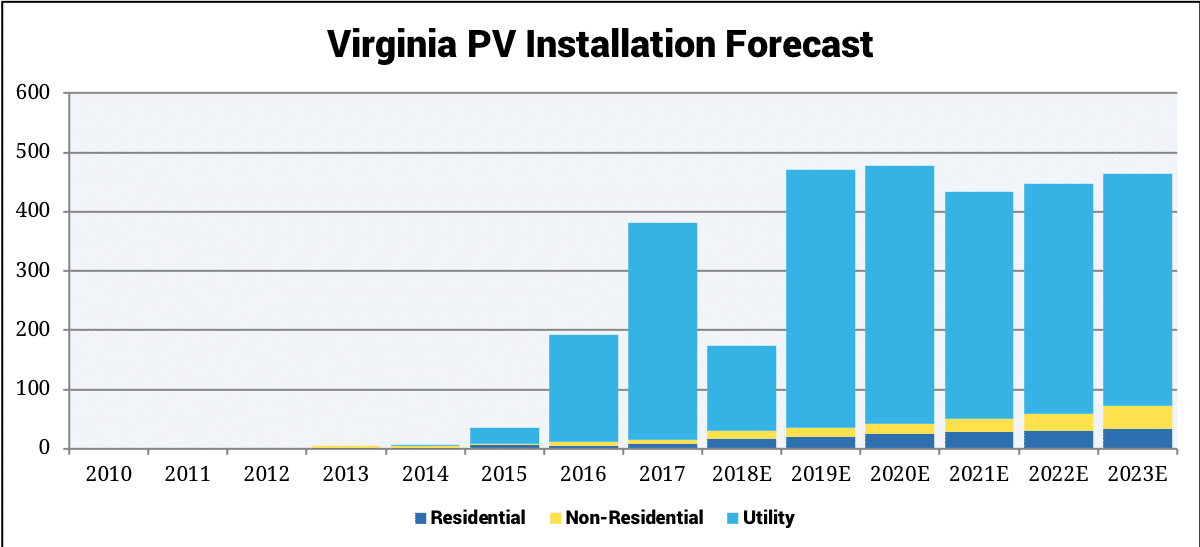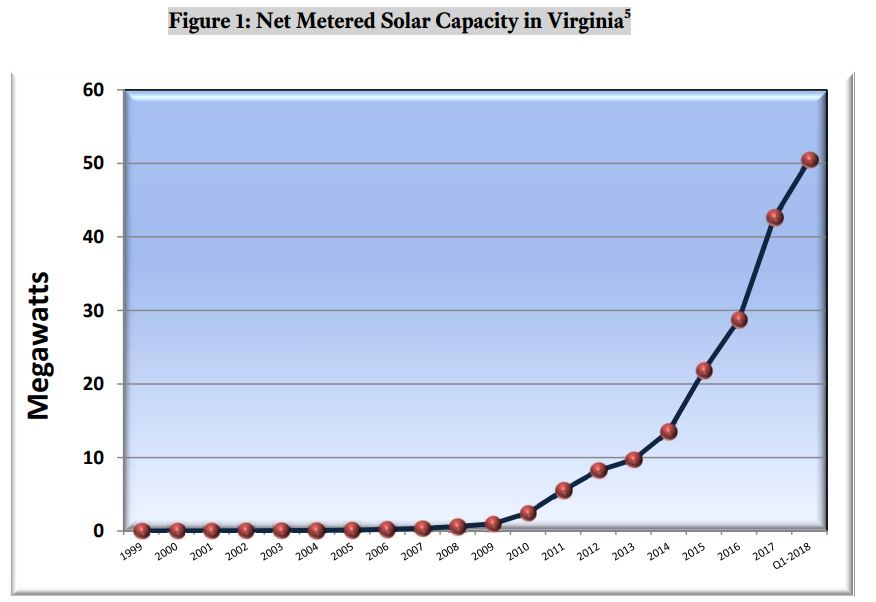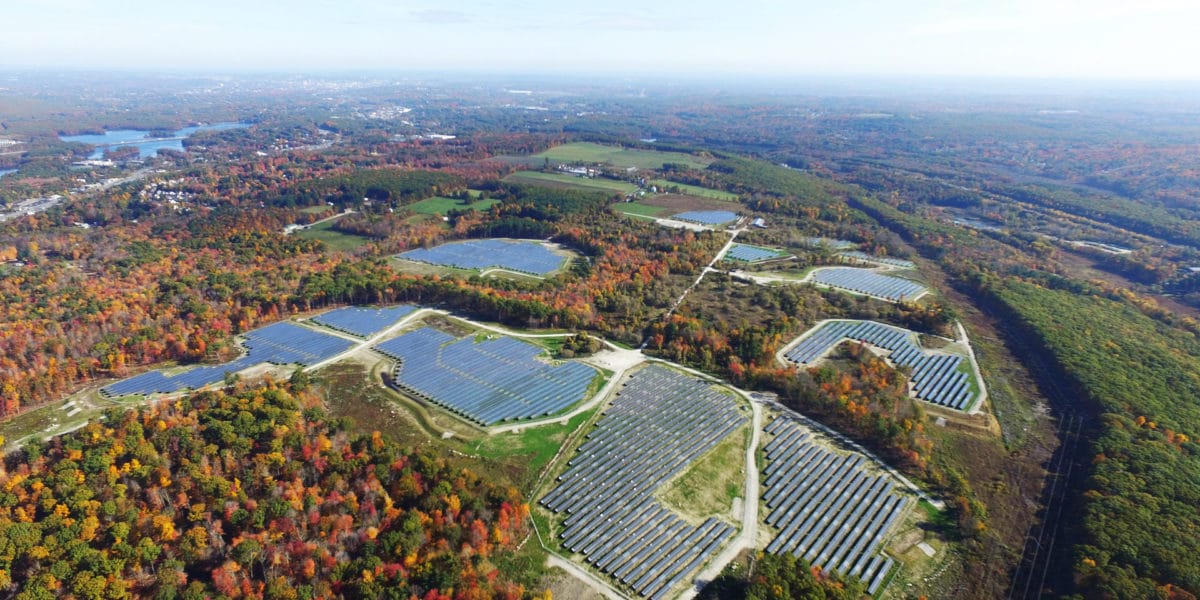Virginia has been in the solar news recently, with the largest power plant east of the Rockies just one bit of said news. On October 1, the State released its 2018 Energy Plan as a guide while it looks out over the next ten years and aligns actions with prior legislation.
The report (91 page PDF) projects energy use and provides an analysis of many energy topics affecting the state: generation, transmission and distribution resources, siting requirements, fuel diversity, efficiency and conservation initiatives, as well as impacts on economically disadvantaged or minority communities.

Then it makes a few recommendations, the first for utility scale development:
Virginia’s investor-owned utilities should issue a Request for Proposals (RFP) for the development of solar and wind generation in the Commonwealth. The RFP should be issued annually beginning in 2018, and the RFP should include the procurement of at least 500 megawatts of solar or wind projects each year.
Included in this 5 GW of renewable energy is a potential 2 GW offshore wind facility that is due before 2028. At least 3 GW of this capacity is to be online by 2022, per current state law.
A second recommendation is for rooftop solar:
To achieve the goals set forth in Senate Bill 966, Dominion Energy should annually issue a Request for Proposals (RFP) beginning in the Spring of 2019 to procure 150 MW of rooftop solar installations annually, with at least 25% procured through power purchase agreements (PPAs).
The report also suggested, to ensure that the state’s programs are not artificially constrained, that the General Assembly should raise the current 1% aggregate cap on the net metering program to 5% of each electric distribution company’s adjusted Virginia peak-load forecast for the previous year.
The state currently has just over 50 MW of total net metered wind and solar power.

There was a recommendation to continue and expand the pilot program for community solar currently in place. The program has a limit on the capacity of individual solar facilities that can participate at 2 MW, and is capped at 10 MW of aggregate capacity in APCo’s service territory and 40 MW in Dominion’s service territory.
The Energy Plan further recommends doubling the Commonwealth’s renewable energy procurement target to 16% by 2022.
The state noted that there was already plenty of solar power planned for the state, and that its “Permit by Rule” (PBR) program for renewable energy projects under 150 MW was operating efficiently. To date, 26 PBR permits for solar projects and one wind power project totaling 816 MW have been issued, with an additional 58 Notices of Intent to apply in the PBR queue totaling 3,317 MW.
But that is just the beginning. In addition the state’s permitting process, PJM Interconnection lists 116 Virginia solar projects in their own New Services Queue totaling over 10 GW.
It might be time for SEIA to update their Virginia projections.
This content is protected by copyright and may not be reused. If you want to cooperate with us and would like to reuse some of our content, please contact: editors@pv-magazine.com.








By submitting this form you agree to pv magazine using your data for the purposes of publishing your comment.
Your personal data will only be disclosed or otherwise transmitted to third parties for the purposes of spam filtering or if this is necessary for technical maintenance of the website. Any other transfer to third parties will not take place unless this is justified on the basis of applicable data protection regulations or if pv magazine is legally obliged to do so.
You may revoke this consent at any time with effect for the future, in which case your personal data will be deleted immediately. Otherwise, your data will be deleted if pv magazine has processed your request or the purpose of data storage is fulfilled.
Further information on data privacy can be found in our Data Protection Policy.